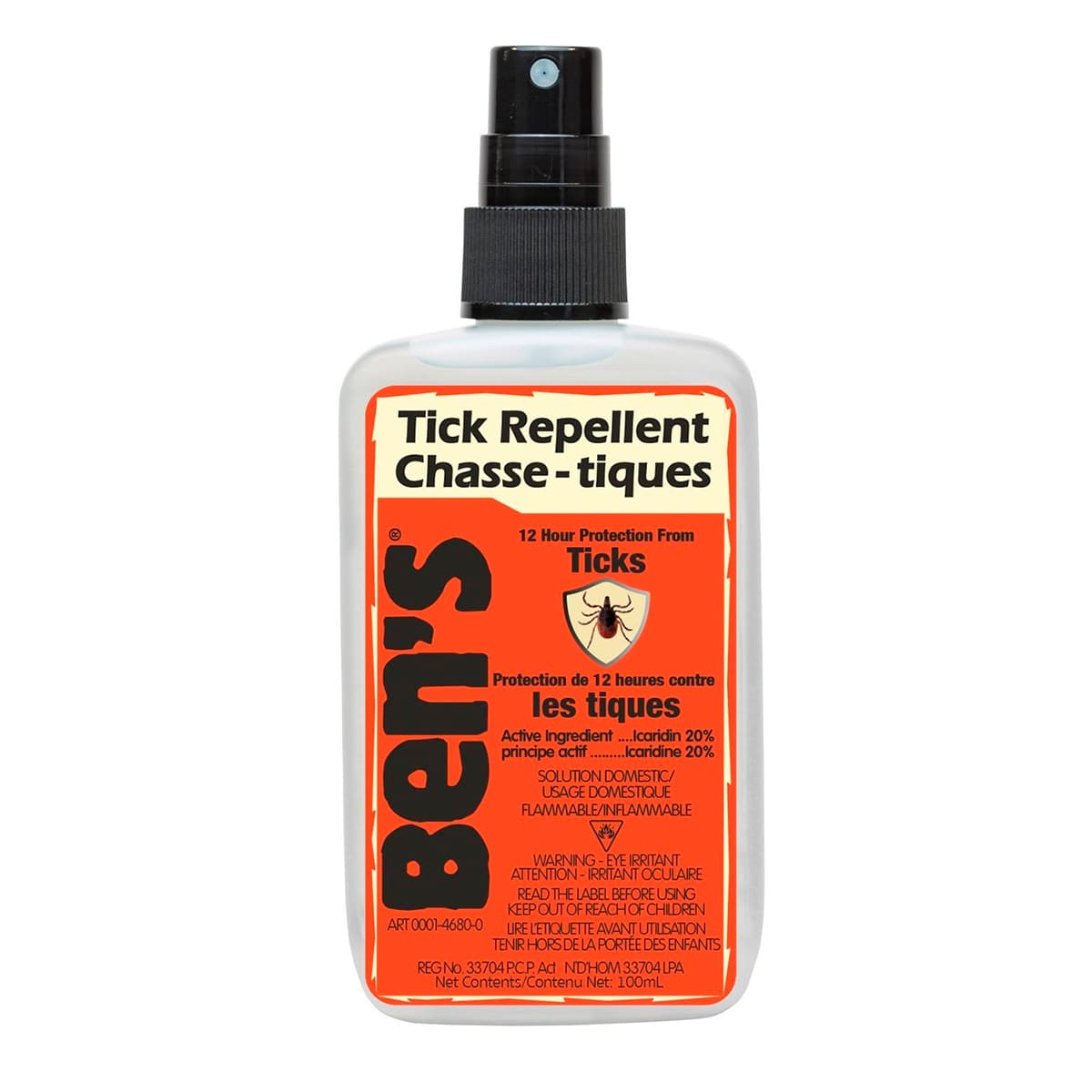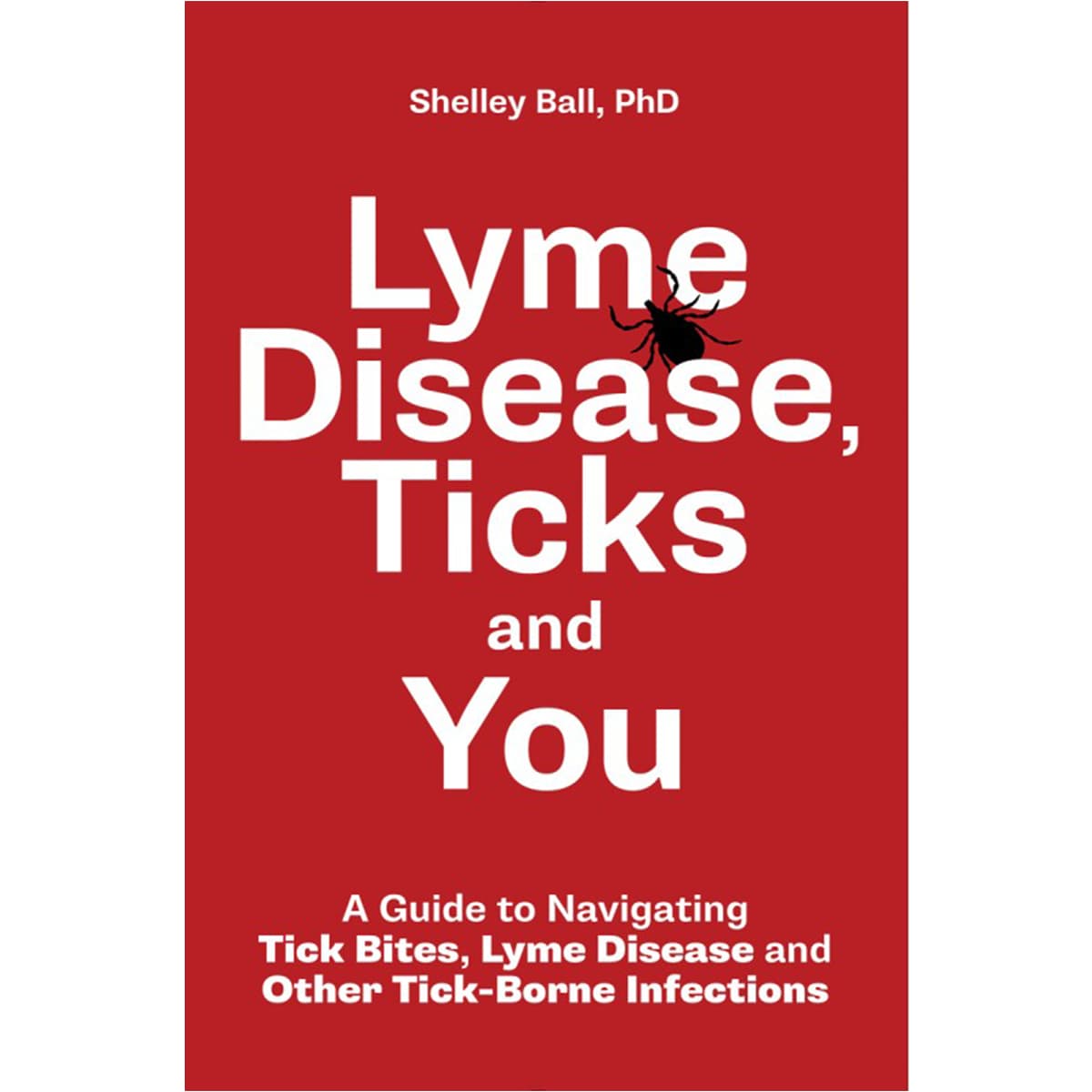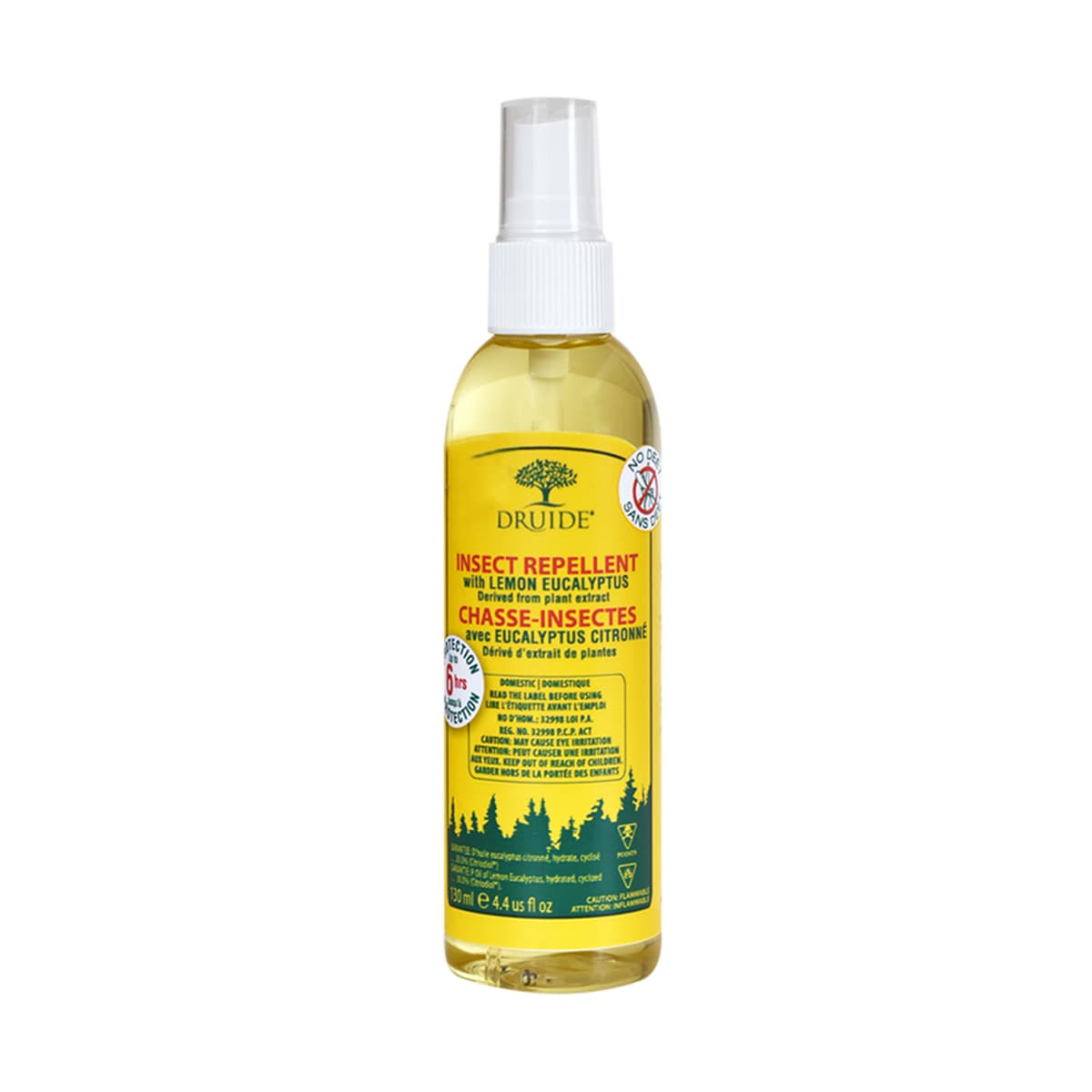Creepy Crawlers And Flying Menaces: Dealing With Biting Insects While In The Canadian Outdoors


Only a couple of unbothered weeks separate us from millions of flying and biting insects when the snow eventually melts. First to emerge are the black flies, closely followed by mosquitoes and later, the deer flies and horse flies. Out and about already are the ticks. These creepy crawlers are ground dwelling members of the spider family who, like other blood sucking menaces out there, are capable of transferring hazardous microscopic organisms. This can lead to infections and diseases which have the potential to severely impact someone's well-being.
Many people who frequently find themselves in nature are well aware of the risks posed by big animals like bears, moose, mountain lions, snakes, sharks, etc. Smaller and seemingly insignificant members of the animal kingdom get far less attention. Those are often regarded as inconvenient pests who serve little purpose. Nothing could be further from the truth.
Although interactions with or exposure to some of these insects and arachnids is not particularly enjoyable, we should nonetheless pay close attention. Some of these so-called pests, especially the tiny bloodsucking ones, could pose a significant risk to our overall health.

Particularly ticks, mosquitoes and biting flies are well known throughout the world for frequently hosting an array of harmful microbiological organisms. While they themselves are unaffected, humans and animals can suffer significantly from the introduction of these micro-organisms into their bloodstream.
Awareness of the creepy crawlers and flying menaces you could be exposed to in your area is important, as well as knowledge of the micro-organisms they can carry and how transmission occurs. Avoiding and minimizing exposure with appropriate precautions and recognizing early signs and symptoms of a possible infection can prevent a life-threatening illness and the possible development of a chronic condition. Education and preventative measures, as much as reasonably and practically possible, will go a long way.
Luckily, here in Canada, we are blessed not to have to deal with the types of insects and diseases commonly found in some of the tropical regions of our planet. The most pressing emergency relating to insects here is a severe allergic reaction to the venom of bees, wasps, or hornets, resulting in anaphylaxis. This is a life-threatening condition in need of immediate response so if you often find yourself in delayed care environments, get trained and be prepared to act.

Protective Measures against Biting Insects
My personal approach with regards to protective measures against biting insects in Ontario is the combination of a long sleeve cotton blend fabric shirt and full-length pant, a wide brimmed hat, a mosquito head net and leather gloves. I find this fabric to be very resilient, breathable, and fast drying while also providing adequate protecting against mosquitoes, black flies, deer flies and horseflies. This outfit, and the timely application of insect repellent, has kept me quite comfortable out there.
When the black flies are out in full force, you really need to be able to tuck in your clothing and cover or spray all possible avenues of approach to bare skin. These little monsters will find a way to crawl in or under clothing and get to you for a blood meal. Black flies feed by using their mouth parts, outfitted with serrated mandibles, to puncture and quickly rip open the skin. Then the insect pumps in an anticoagulant, enabling the blood to flow more freely so it can quickly feed. This last part is often the most uncomfortable as this substance and other salivary excretions cause itching, swelling and pain at the bite site.

Mosquitoes don't really operate this way. They try and push their proboscis, the long mouthpiece they use to suck up blood, into the skin. This can even happen through a layer of clothing. Both black flies and mosquito's inject chemicals and saliva, possibly containing bacteria or viruses. If so, they were picked up from an infected host during a previous blood meal and now reside in their salivary glands or intestinal tract. This is how these insects spread diseases.
Black flies in North America are unlikely to transmit any diseases but that's not the case in Africa and parts of the Middle East. They can however cause blood poisoning in livestock and occasionally, humans have experienced black fly fever. This is a systemic reaction following exposure causing nausea, headache, fever, weakness, and swollen lymph nodes.
A secondary local infection can occur when our immune system responds to the chemicals introduced at the sight of the bite. Another possibility for the development of a secondary infection occurs when you swat the insect during feeding and parts break off, embedding in the skin. Whatever the outcome of a bite, scratching the itchy and swollen welts should be avoided to prevent infection. Bite sites can also easily infect in hot, humid conditions or tropical environments. In a worst-case scenario this could develop into a systemic infection which, if left untreated, can be life threatening.

Chemical Insect Repellent
After an episode where the rubber nose pads melted off my sunglasses and got smeared on my face because I used an insect repellent wipe with DEET, my outlook on chemical insect repellent somewhat changed. We approached the end of August in Algonquin and by then I was wearing a short sleeve uniform shirt. Besides one, maybe two wipes, insect repellent generally stayed in my barrel that time of year as we often retired for the night when the mosquitoes became active around dusk.
That day we got redirected to go deal with an issue in another area then originally planned. This new route took us over a long portage that can be notoriously bad. So, I reached in my pocket and split one of such DEET covered repellent wipes in half and we both applied it to exposed skin. I remember rubbing some on the top of my head to keep the deer flies at bay when portaging the canoe. I also lifted my sunglasses on top of my head. It's a long portage so before we got into the canoe again, we had a drink and arranged our gear when my partner asked what the ‘black stuff' was on my face. I was aware that DEET is pretty strong stuff, but that experience got me thinking. When you live and work in the bush, insect repellent is pretty much part of the daily routine during the high season. This exposes you on a very regular basis and for extended times to some pretty strong chemicals.
From time to time I also used bug jackets when it got really bad or when the black flies peak. They work reasonably well but I found myself getting really hot under there and losing some of my peripheral vision, even when wearing a ball cap to keep the hood in place.
Since then I started wearing long sleeve shirts and use a hat with mosquito net. I make sure to have leather gloves available for camp tasks and to portage my canoe and kit. There have been times when the bugs where so numerous and so aggressive that they literally drove us off portages or into our tents in the evening. For a good few days each season, that was the only way to have your evening meal in peace. Experience taught me that in such instances, even very strong insect repellent only goes so far for so long. One piece of advice here: make sure you bring enough to last your entire outing. The mental impact resulting from hordes of bugs constantly swarming and getting to bite you should not be underestimated. It wears on you and sometimes even poses a safety risk when using edged tools or power tools.
These days I use chemical repellent sparely and when the need arises. I usually spray key areas and try to keep it off my skin if possible. Such areas are where the pant legs meet the boots and on the plackets and cuffs at the wrist of a long sleeve shirt. But, there are still days when you think you're on top of it, only to reach for a can of spray 10 minutes later and completely cover yourself out of shear frustration. One can only imagine what it must have been like for the first nations and early settlers prior to all the modern solutions.
Organic Alternative Repellents
However, there is an alternative available for those who are weary of potentially harsh chemical repellents and long exposure times. The company ‘Druide' produces a Lemon Eucalyptus Insect Repellent which I have been trying out lately.

This liquid spray is certified organic, biodegradable and made in Canada. According to their website, the product is registered with Health Canada as an insect repellent lotion in accordance with the Canadian Pest control Act. The active ingredient is 30% Citridiol and derived from lemon eucalyptus leaves, making this the most effective plant based repellent available in Canada today. Even though it doesn't contain synthetic ingredients like DEET for instance, it offers efficient protection against biting insects like mosquitoes, biting flies and even ticks.
I enjoy the fact that it represents a healthier option in comparison to some of the alternatives. So far, the product has been really effective in the environments I used it and has a pleasant odor. It lasts around 4 to 5 hours but, like any other repellent, I find that mostly depends on the circumstances, the user and the amount applied. The manufacturer recommends re-application when necessary after 6 hours and only twice a day. I think it's a lot nicer to use compared to other insect repellents or insecticides currently available on the market. When choosing insect repellents, there are some options out there but generally you'll be choosing between essential oil-based products or those containing Icaridin, DEET or Permethrin. The best advice is to read the warning labels and do your own research. What works or is needed for someone in a certain environment may be inadequate for someone else in a different environment. In some regions of the world, bomb proof protection is a must to prevent serious illness resulting from biting insects. You need to be realistic about the risks you're facing from infection versus your preferable repellent. Here in Canada, although lucky in comparison to some tropical countries, we do have hot spots for certain transmittable diseases. Be aware and make an informed decision on what is needed and what will work best for you. Personally, I believe this repellent to be a healthier alternative with regard to some of the other insect repellents I sometimes use. I try to limit my overall exposure to these other products and this spray allows me to do that without sacrificing effective protection.
Research and Understand the Risks of Ticks
Doing your research and understanding the risks you are potentially exposed to with regards to illnesses and insect vectors, and the benefits and risks of using certain insect repellents over others, can be somewhat of a daunting task. Usually, you'll have to spend a considerable amount of time gathering a bunch of information from several different resources in an effort to educate yourself. One such topic of interest is ticks and the diseases they can transfer. As mentions before, here in Canada, we don't really have serious illnesses to worry about with regards to mosquitoes, black flies and other blood sucking winged menaces. That really doesn't 'fly' when it comes to ticks though.

Ticks have been around for a very long time. The oldest tick ever found was preserved in amber and estimated to be 90 plus million years old. This is considered the first fossil evidence of ticks already being around and feeding on dinosaurs. They also have been transmitting and spreading tick-born infectious diseases for a very long time. Evidence of Lyme disease was found in Otzi the Iceman. His approximately 5300 year-old mummified and frozen remains were found high in the European Alps in 1991.
Ticks can host and transfer a wide variety of diseases with the Borrelia Burgdorferi bacterium causing Lyme disease being the most well-known. Other serious transmissions include Babesiosis, TBE and Rocky Mountain spotted fever, just to name a few. Lyme disease is notoriously difficult to diagnose and the chronic symptoms associated with this tick-born illness are often debilitating and severely affect an infected individual's health and well- being. If there is one little critter out there deserving of your attention in the outdoors, it's a tick. North America has seen a surge in Lyme and it's now considered the most prevalent tick-borne infectious disease. Clinical diagnoses and infection numbers by government health agencies are believed to be underestimated because of the difficulties faced in the diagnosis.
Some regions in Canada have higher populations then other areas and some are known hot spots. It's advisable to do some research and prepare yourself. I've dealt with ticks where I grew up in Belgium and thought I knew a thing or two about this subject until I got my hands on this book.

Lyme Disease, Ticks and You is a 160 page book written by Shelley Ball (PhD) and easily one of the top resources I ever came across regarding ticks, tick-borne diseases and other relevant information. Documenting her personal struggles with the disease and the difficulties surrounding the science of Lyme, Shelley offers a wealth off useful information with regards to ticks and their life cycle, habits, diseases, preventive measures, repellent choices, challenges with regards to testing, diagnosing and so much more.
This book inspired me to upgrade my tick kit and take my understanding of this subject to the next level. I highly recommend it, especially for people who often find themselves outdoors.

So, what do I carry to deal with creepy crawlers and flying menaces? My kit is contained in a Frost River accessory pouch with a Savotta Trinket pouch that holds all the tiny stuff. I don't always carry the full kit, but this set up gives me options to just take what I need or fully stock up with multiple spray canisters. Handy for long trips in spring and early summer when it can be really bad out there.
Insect and tick repellents: Druid lemon eucalyptus based repellent spray, Ben's Icaridin based tick repellent spray and Ben's DEET based repellent wipes. All of them work against mosquitoes, biting flies and ticks but I can choose which one to use when. The wipes are easy to carry in a shirt pocket or PFD as an immediately accessible option later in the season.
Alcohol wipes, adhesive bandages and tape: Cleaning and disinfecting bites and tick removal tools. Small bandages to cover bite sites if necessary, also preventing contamination or scratching.
3 plastic tubes: Once a tick has been removed, I store it in a tube and write any relevant details down on a piece of tape I've put on the side of each tube. Keeping it allows me to send it in for testing if need be.

Ticks can easily end up in your house when they attach themselves to your pet during outdoor activities or when you have pets running around outside during the day and sleeping inside at night. If you live in an area with ticks, examine your pets and their beds regularly for unwanted hitchhikers and guests. An engorged female tick can produce several thousand eggs when it has arrived at that stage of its life circle. This can lead to an indoor infestation.
With warmer winters becoming a new reality, more and more micro-organisms and their hosts may be able to survive and thrive. Although we live in a relatively safe environment with regards to disease transmission, it does occur, and some do pose a serious risk to our health and safety. Being well-informed and prepared means you can make an educated decision and still enjoy the outdoor without becoming paranoid.
Shop The Gear
Peter Desmet

Peter grew up in Belgium and moved to Ontario in 2011, where he became a Park Warden in the interior of Algonquin Park. Having a keen interest in outdoor adventure from a young age, he attended numerous courses and programs, allowing him to safely hike, climb, canoe and undertake winter expeditions in Europe’s wild places. His hunger for knowledge led him to become a certified survival instructor in his mid-twenties and more recently, he started his own outdoor school. Peter knows what he knows and enthusiastically shares this, knowing he too will forever be a student of nature.



